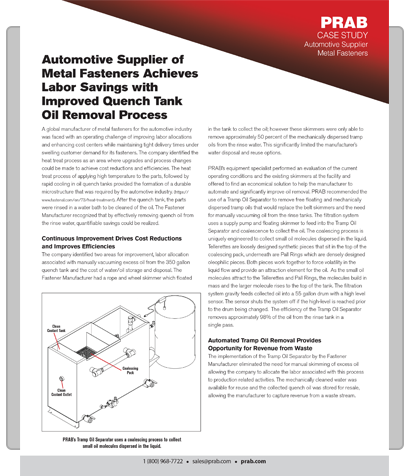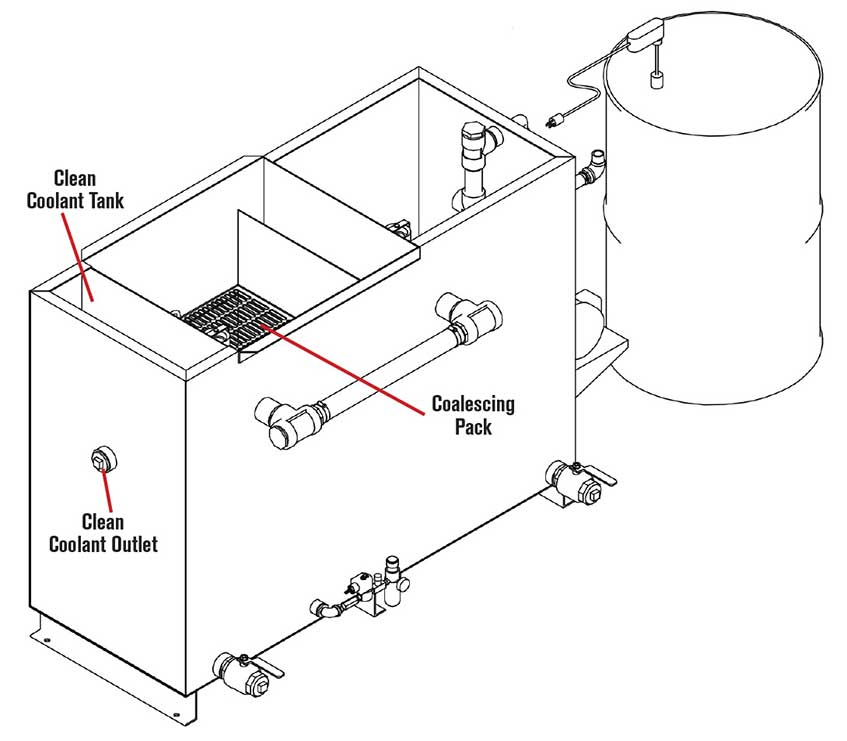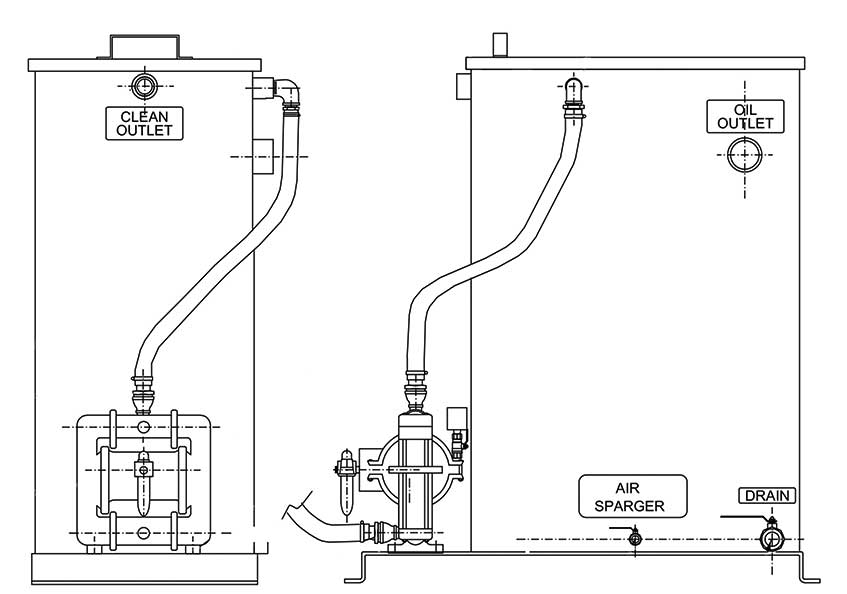
A global manufacturer of metal fasteners for the automotive industry was faced with an operating challenge of improving labor allocations and enhancing cost centers while maintaining tight delivery times under swelling customer demand for its fasteners.
The company identified the heat treat process as an area where upgrades and process changes could be made to achieve cost reductions and efficiencies. The heat treat process of applying high temperature to the parts, followed by rapid cooling in oil quench tanks provided the formation of a durable microstructure that was required by the automotive industry. (https://www.fastenal.com/en/73/heat-treatment). After the quench tank, the parts were rinsed in a water bath to be cleaned of the oil. The Fastener Manufacturer recognized that by effectively removing quench oil from the rinse water, quantifiable savings could be realized.
The company identified two areas for improvement, labor allocation associated with manually vacuuming excess oil from the 350 gallon quench tank and the cost of water/oil storage and disposal. The Fastener Manufacturer had a rope and wheel skimmer which floated in the tank to collect the oil; however these skimmers were only able to remove approximately 50 percent of the mechanically dispersed tramp oils from the rinse water. This significantly limited the manufacturer’s water disposal and reuse options.

PRAB’s Tramp Oil Separator uses a coalescing process to collect small oil molecules dispersed in the liquid.
PRAB’s equipment specialist performed an evaluation of the current operating conditions and the existing skimmers at the facility and offered to find an economical solution to help the manufacturer to automate and significantly improve oil removal. PRAB recommended the use of a Tramp Oil Separator to remove free floating and mechanically dispersed tramp oils that would replace the belt skimmers and the need for manually vacuuming oil from the rinse tanks. The filtration system uses a supply pump and floating skimmer to feed into the Tramp Oil Separator and coalescence to collect the oil. The coalescing process is uniquely engineered to collect small oil molecules dispersed in the liquid. Tellerettes are loosely designed synthetic pieces that sit in the top of the coalescing pack, underneath are Pall Rings which are densely designed oleophilic pieces. Both pieces work together to force volatility in the liquid flow and provide an attraction element for the oil. As the small oil molecules attract to the Tellerettes and Pall Rings, the molecules build in mass and the larger molecule rises to the top of the tank. The filtration system gravity feeds collected oil into a 55 gallon drum with a high level sensor. The sensor shuts the system off if the high-level is reached prior to the drum being changed. The efficiency of the Tramp Oil Separator removes approximately 98% of the oil from the rinse tank in a single pass.

PRAB’s Tramp Oil Separator removes free floating and mechanically dispersed tramp oils using a supply pump and floating skimmer.
The implementation of the Tramp Oil Separator by the Fastener Manufacturer eliminated the need for manual skimming of excess oil allowing the company to allocate the labor associated with this process to production related activities. The mechanically cleaned water was available for reuse and the collected quench oil was stored for resale, allowing the manufacturer to capture revenue from a waste stream.